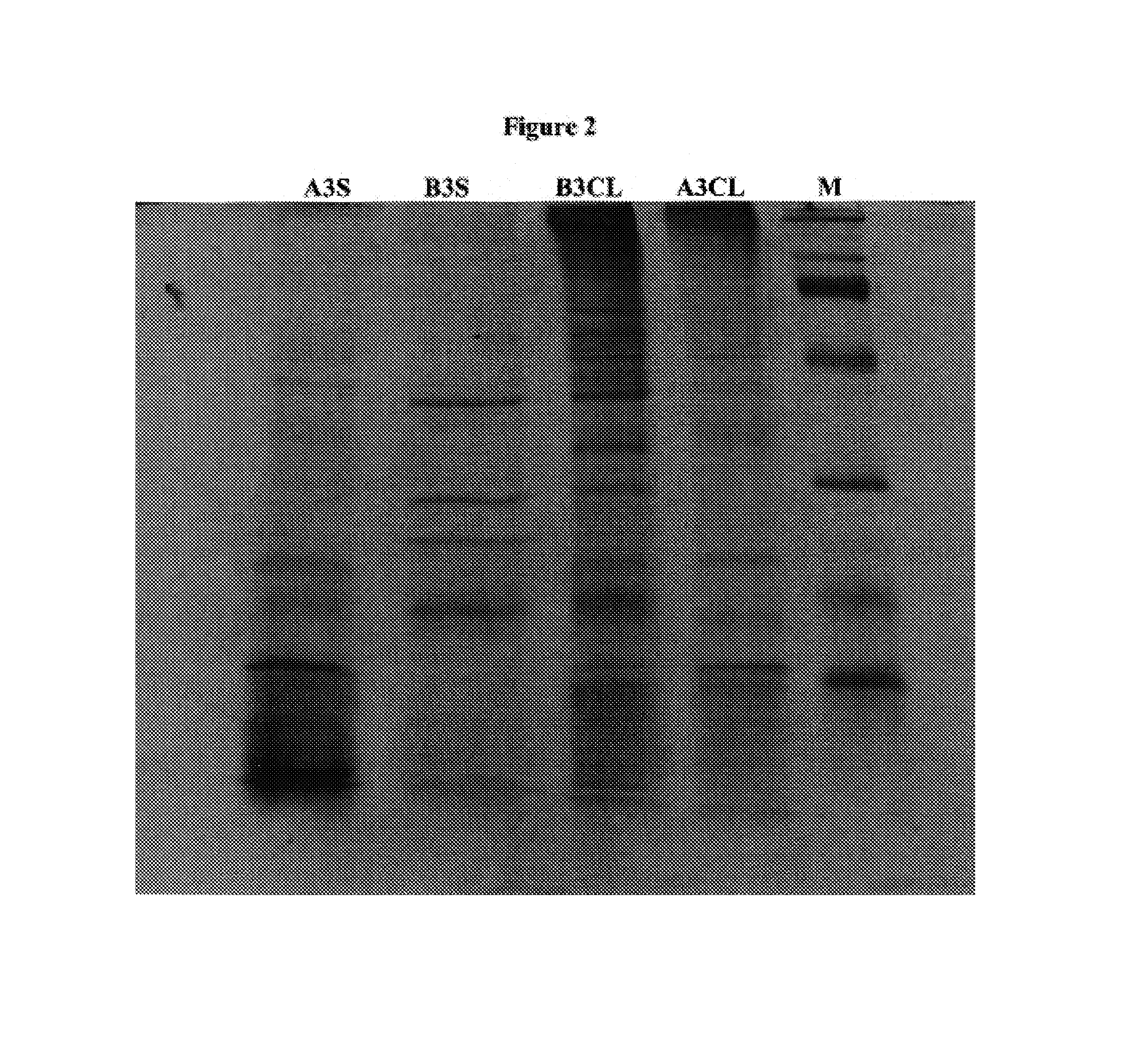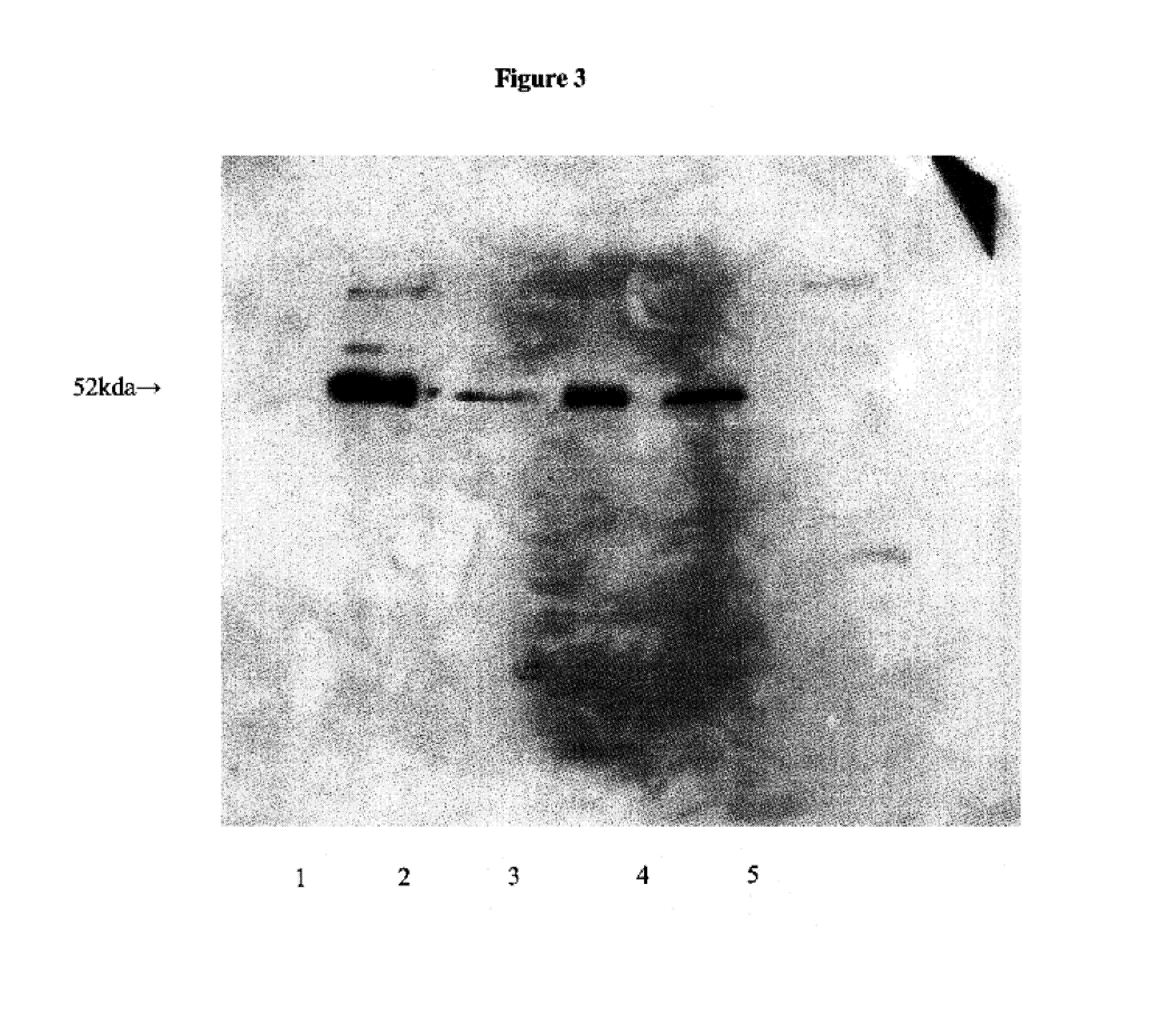Use of cross-protection to identify novel vaccine candidates for infectious agents
a technology of cross-protection and novel vaccine candidates, applied in the field of subcellular vaccines, can solve the problems of low antibody titer, low antibody titer, and inability to effectively protect against exposur
- Summary
- Abstract
- Description
- Claims
- Application Information
AI Technical Summary
Benefits of technology
Problems solved by technology
Method used
Image
Examples
Embodiment Construction
[0041]Our laboratory has taken an approach (i.e. identifying useful subcellular components) contrary to the existing scientific methods (i.e. forming live attenuated mutants) on tularemia vaccine development. Our successes were based on our past unreported observations:[0042](a) We have discovered that subculturing F. tularensis LVS in a synthetic medium stresses the bacterium and causes enhanced expression of a capsule. For other infectious bacteria (e.g. those that cause whooping cough and pneumonia), the presence of a capsule is indicative of the pathogenicity of the bacterium and severity of illness in the host. This teaches away from our later observation that, after a few subcultures in the synthetic medium, bacteria continued to be capsulated but were non-lethal for the mice tested. Thus, lethality is due to a factor or factors other than the capsule.[0043](b) Toxins usually act immediately on host target cells because of their detergent (e.g. bee venom toxin) or enzymatic (e...
PUM
| Property | Measurement | Unit |
|---|---|---|
| Atomic weight | aaaaa | aaaaa |
| Molecular weight | aaaaa | aaaaa |
Abstract
Description
Claims
Application Information
 Login to View More
Login to View More - R&D
- Intellectual Property
- Life Sciences
- Materials
- Tech Scout
- Unparalleled Data Quality
- Higher Quality Content
- 60% Fewer Hallucinations
Browse by: Latest US Patents, China's latest patents, Technical Efficacy Thesaurus, Application Domain, Technology Topic, Popular Technical Reports.
© 2025 PatSnap. All rights reserved.Legal|Privacy policy|Modern Slavery Act Transparency Statement|Sitemap|About US| Contact US: help@patsnap.com



